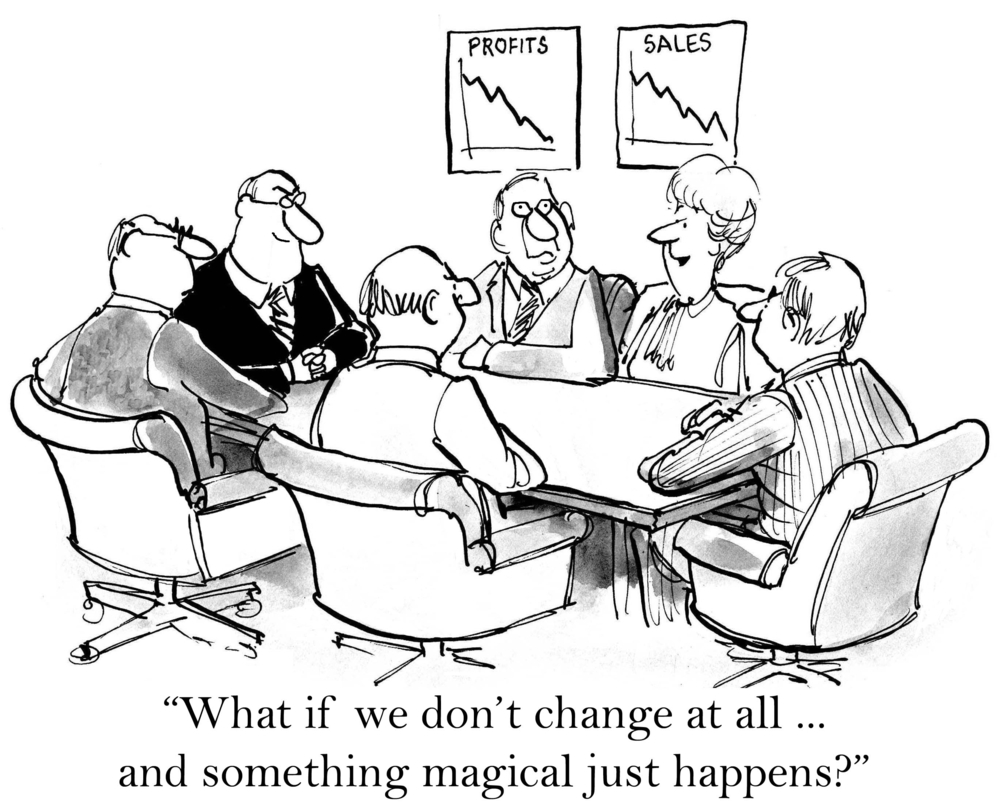Look around any corporate house, manufacturer, service provider and one theme that resonates across is change management. So why do organisations need to change? They need to change because they need to deliver value to stakeholders, to customers, to society. Mostly organisational questions are like – should the organisation expand into new regions, get closer to customers, innovate with new products and services, get faster and be more responsive? Many leaders answer this question with – “all of the above”—but that’s being foolhardy, not audacious. The problem is that change management is seen as a one-time activity or a task. A dramatic departure from the way we were doing business to the way we want to do business. This is the single biggest mistake leadership teams make repeatedly. Change management is about adaptability and agility. And that’s why I keep saying that change management is as much about staying the course as it is about pivoting. How do organisations become perpetual change machines without losing their core value system?

The trigger
The trigger for any organisational change is always an existential threat, a new competitor, loss of market relevance, no competitive advantage, no business growth, no value creation. Whilst addressing these issues organisations focus mostly on improving efficiency and cost cutting. Sounds like a plan, right? Wrong. For me these are hygiene steps and should have been there in the first place. I have seen enough attempts to streamline businesses through productivity improvements and restructuring. Focus only on cost cutting is the quickest way to another failure because it undermines growth. It depletes capabilities, saps morale and leaves the workforce confused. The challenge is to make change management a part and parcel of the business plan, and not a ‘project’.
The important thing to understand is that different organisations are at different life stages and different maturity levels. There is no one formula that can be followed on this journey. That’s where the sagacity of the management team comes into play. Organisational change for many leadership teams was once a seasonal experience and they used to hire one of the Big 4 consultants to get this ‘done’ as a project. But given today’s business environment, change management is the new management. Theoretically, everybody ‘gets it’, but we don’t really see this in practice.
The problem
The problem starts at the very beginning. It’s not about how to change, it’s about what to change and importantly when to change. I am a believer in momentum change. Once there is alignment, organisations need to move fast. Employees at all levels need to ‘see’ that people driving the change are walking the talk otherwise it is highly possible that cynicism will set in. Having said that, lets also acknowledge the fact that change management is tough. Part of the problem is that there is little agreement on what factors drive change management. Ask six leadership team members to name one key factor for success, and in all likelihood, you will get six different answers! Alignment does not come with words. Alignment comes with actions. Demonstrable action. A leader should never assume that because a decision was made, the necessary action and changes will take place. This is almost never the case. People who have been in business for as long as I have will certainly attest to this fact.
The solution
This leads me to the heart of the problem or as I would like to see it, the solution – the people driving the change. The ability of the leadership team to reconcile perspectives or priorities and developing a shared understanding of the goals is critical. Any effort without articulating and addressing this key issue will always be sub-optimal. Leadership alignment and development is intertwined with change management. One cannot happen without the other. I have watched with considerable interest many organisations desire to change, a few lessons that I would follow are –
- Focus on important goals that have not been accomplished.
- Stay true to your core values.
- Learn from the past. Acknowledge the mistakes.
- Root your plan in data and facts. Gut feeling is good only when you have to hit a six on the last ball.
- Set milestones to monitor progress. Keep questioning yourself as to how your plan for change is different from what you have tried in the past.
- Choose the right leaders.
- Empower people, leaders don’t micro-manage.
- Make leaders accountable for change.
As someone once said, ‘Change never occurs as some sort of happening; it is part of everyday life.’ Change is continuous and is as much about staying the course. Organisations must develop leaders who understand the core value system and can live this philosophy. Sustained transformation and value creation depend on creating perpetual change mechanisms that drive organisational growth.

